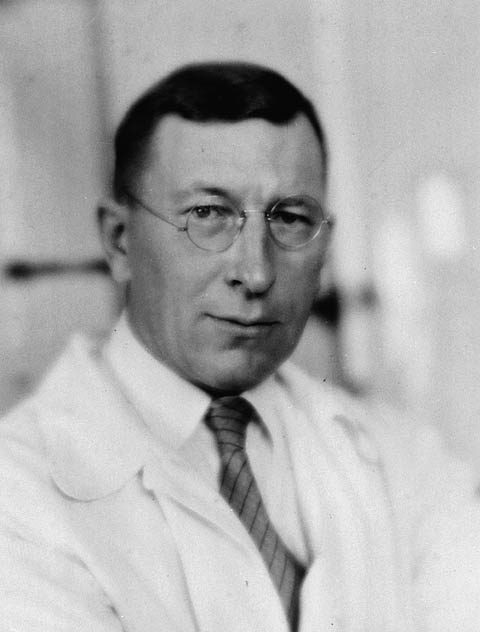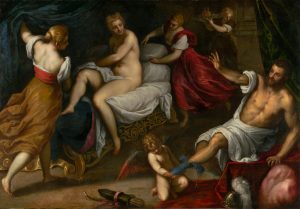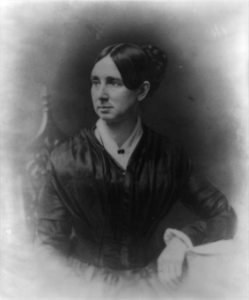Many people believe that Type 1 diabetes is similar to Type 2 diabetes, but these diseases are actually very different from each other. Type 1 diabetes is an autoimmune disease that is caused due to genetic heredity. Type 1 diabetes is typically diagnosed at birth or during an individual’s childhood. Type 2 diabetes can be genetic but typically occurs due to poor eating habits and lack of exercise. Type 2 diabetes can be controlled because your body is still making insulin and the condition can be reversed with a change in lifestyle. In contrast, individuals are diagnosed with Type 1 diabetes because their body is fighting itself. Their bodies are destroying their pancreatic beta cells. This is why their pancreas abruptly stops producing insulin. All humans need insulin to live. It’s an essential hormone, and without it, you will die. Type 1 diabetics are dependent on insulin delivered to their bodies either through a syringe or an insulin pump. Our bodies use insulin to regulate blood sugar, especially after consuming a meal or taking part in physical activity. Type 1 diabetes changes people’s lives, and it requires education, responsibility, and lifestyle changes to adjust to living with this auto-immune disease.1

The T Cells in the pancreas attack the Beta Cells | Courtesy of Wikimedia Commons
Two men from two very different backgrounds discovered the most precious substance known to Type 1 diabetics — insulin. Frederick Grant Banting came from a small family that lived on a farm in Ontario, Canada. When Banting first set off on his college journey, he wanted to dedicate his life to ministry. After some time, Banting boldly changed his plans and attended medical school at the University of Toronto. Eventually, this decision would make a large impact on the medical community. But first, he had to graduate from medical school, which he did in 1916, and then he became active in the military for several years. After serving his country, Banting opened a practice for general surgery in the year of 1920 in London, Ontario.2

John James Rickard Macleod, who would also be key in the discovery of insulin, followed a different path than Banting to get to that moment. Macleod also studied medicine, attending Marischal College of the University of Aberdeen in Scotland. Macleod focused on educating others at the London Hospital Medical School and at Western Reserve University in Cleveland, Ohio. Macleod was also very involved in his research outside of his teaching duties. Macleod was engaged in research about how carbohydrates are metabolized. This represented a huge stepping stone that led Macleod to researching diabetes3.

Frederick Banting, the small town surgeon, was excited and passionate about all he was learning. He first became interested in the field of diabetics after reading an article in Surgery, Gynecology and Obstetrics, called “The Relation of the Islets of Langerhans to diabetes, With Special Reference to Cases of Pancreatic Lithiasis.”4 After reading and analyzing this study by Moses Barron, Banting’s interest in the topic grew steadily, and he eventually examined previous research pertaining to Langerhans (the cells of the tissue that are found in the pancreas), islet cells, and hormones. The journey to the discovery of insulin began one night at 2 A.M. when Banting got out of bed to document an idea he had. He frantically copied notes on his thoughts about sources he had been analyzing. Banting was so excited about this topic the he shared his thoughts with F.R. Miller who was a former mentor. Miller strongly recommended that Banting share his idea with a well-known researcher by the name of John James Rickard Macleod. 5
The two different paths these men went down would become important to the research they both conducted pertaining to the discovery of insulin. Banting and Macleod were both experienced in different areas. Banting was experienced in surgery, and Macleod in research and teaching. Macleod used his teaching experience from his university teaching, and his passion for research to help guide his colleague Banting through his own research. These two had strengths the others lacked, and by putting their strengths together this made Banting and Macleod a successful team.6
These two medical professionals met Monday, November 7, 1920. Macleod was not immediately impressed with Banting — he had little experience and lacked any background related to diabetes. Macleod had his doubts because the only thing Banting had to show was some limited knowledge he had gained by reading textbooks or previous research. Macleod, the researcher, did not believe that Banting would be worth his time to mentor. Banting had a plan to discover what would be known as insulin, and he had every intention to accomplish this one way or another. 7
Passionate about his idea, Banting did not let it go. He approached Macleod again, and Macloed reluctantly gave Banting a chance to prove himself in the laboratory by offering him a space to complete his plan. Banting was reminded by Macleod that what he was setting out to do was not going to be a walk in the park. Banting did not want to risk wasting all of his time on research that may not even work. On March 8, 1921, began the project in Macleod’s laboratory. Macleod provided Banting with two laboratory assistants for the summer to accompany him throughout his research. These assistants were Charles Herbert Best and Edward Clark Noble, and both had experience researching blood glucose levels. The two assistants flipped a coin to see who would be involved in the research over the summer with Banting, Noble lost the coin flip. On May 17, 1921, the research and the advising from Macleod began.8
Shortly after, Banting and Best began working on their experiment alone because Macleod had left for vacation for the summer. The two began using dogs, and it was not clear as to why they chose this specific animal. They used the dogs that they did because they had been pancreatectomized, meaning that there had been a surgical excision of the pancreas. However, they ran into several road blocks because they lost some dogs due to infection, but still, they continued with their work. They had two different groups for experimentation that represented the endo and exocrine process that they would be mimicking. One group of dogs had effective pancreases, while the other group did not. The effective pancreases allowed the two men harvest insulin from the functional pancreas. The step of this portion of the experiment was classified as the “First Extract of the hypothetical internal secretion.” 9 The men extracted the secretion from a pancreas that had degenerated. This pancreas had been ground up and filtered; the purpose of this step was to test the blood glucose levels of the dogs. The results they obtained were that the blood glucose did not spike, it kept the level relatively normal. This finding showcased there to be less sugar found in the urine which was a step in the right direction because this meant the secretion was effective.10
Banting and Best had some great research findings to share with Macleod when he returned from his long vacation. Banting even had the courage to ask Macleod for extra funding for his growing research. Macleod advised Banting to work with what he was provided. This caused the first of many disagreements between these two researchers. In November 1921, Banting and Best began documenting their research they conducted over the summer. The two presented their findings at a local university. They received some feedback from this event, which helped initiate the next step of the experimental phase. 11
The next step of the experiment was known as the “longevity experiment,” and it focused on using the substance they had extracted to extend the life of these dogs. There were some inconsistencies with the substance that led to death in some of the dogs. The two could not figure out why the dogs died, all they knew was that properties of the substances were unbalanced making it a dangerous liquid. Banting and Best eventually got the liquid to be the correct substance they wanted it to be. Macleod encouraged Banting and Best to participate in an upcoming fair to showcase their research, and the two took the opportunity. This showcase of their research did not go as smooth as they had hoped. People who attended the seminar event were well-educated in the field of diabetes and asked numerous questions that Banting could not answer. Banting was convinced that Macleod set him up to fail and was trying to take credit for his work because during the showcase Macleod used the word “we.” This caused more tension between the two men.12

In 1923, all of Banting and Best’s hard work over the years was finally paying off. The two had successfully isolated and purified the secretion from the pancreas. This was the biggest medical discovery yet for the diabetic community. That same year, Banting and Macloed received the Noble Prize in physiology and medicine for this major discovery. This was a controversial award because Best had clearly done more work than Macleod. Banting, however, did share credit with Best, because of his contributions to the discovery.13
The prices of insulin have drastically increased in recent years. Insulin over the past fifteen years has tripled in price, all diabetics depend on this precious resource but may not always be able to afford it. Insulin is now “a $27-billion global market,” and this market is thriving financially.14 There is little competition in this multi-billion-dollar market, because there are very few companies involved in this industry, including Eli Lilly, Sanofi, and Novo Nordisk. These large corporations can allow prices of insulin to fluctuate as they please, and which enables the companies to make a large profit on this product which is an everyday necessity for type 1 diabetics to live.15
The prices have become so high where some Type 1 diabetics cannot afford the insulin they need to survive. High prices have caused some diabetics to search for cheaper insulin from places that may not have the correct compounds, which could often result in death. In addition, due to climbing prices, some individuals are rationing the substance, which can be very dangerous because a precise amount of insulin is needed to help keep blood sugars in the average range. Banting never intended to make any money off of his major discovery; he sold the patent for insulin for a single dollar. His famous statement, “Insulin does not belong to me, it belongs to the world,” is something that should be taken into consideration to this day. If Banting could witness today’s devastating reality of rapidly increasing prices of insulin, he would likely be upset that this is where we are now.16
- Zachary Pearce, Type 1 Diabetes: Causes, Treatments and Potiential Complication (New York: Nova Science Publishers, 2014), 1-5. ↵
- Louis Rosenfield, “Insulin: Discovery and Controversy,” Clinical Chemistry (2002), 2272. ↵
- Funk and Wagnalls New World Encyclopedia, 2018, s.v. “John James Rickard Macleod.” ↵
- Louis Rosenfield, “Insulin: Discovery and Controversy,” Clinical Chemistry (2002), 2271-2272. ↵
- Louis Rosenfield, “Insulin: Discovery and Controversy,” Clinical Chemistry (2002), 2271-2272. ↵
- Funk and Wagnalls New World Encyclopedia, 2018, s.v. “John James Rickard Macleod.” ↵
- Louis Rosenfield, “Insulin: Discovery and Controversy,” Clinical Chemistry (2002), 2270-2281. ↵
- Louis Rosenfield, “Insulin: Discovery and Controversy,” Clinical Chemistry (2002),2272-2273. ↵
- Janine. M. Maietto, “The Discovery of Insulin: Is There Glory Enough for All?,” Einstein Journal of Biology and Medicine 28, no. 1 (2012): 12-17. ↵
- Janine. M. Maietto, “The Discovery of Insulin: Is There Glory Enough for All?,” Einstein Journal of Biology and Medicine 28, no. 1 (2012): 12-17. ↵
- Janine. M. Maietto, “The Discovery of Insulin: Is There Glory Enough for All?,” Einstein Journal of Biology and Medicine 28, no. 1 (2012): 12-17. ↵
- Janine. M. Maietto, “The Discovery of Insulin: Is There Glory Enough for All?,” Einstein Journal of Biology and Medicine 28, no. 1 (2012): 12-17. ↵
- Funk and Wagnalls New World Encyclopedia, 2019, s.v. “Banting, Sir Frederick Grant.” ↵
- Alanna Mitchell, “What would Frederick Banting Think? Insulins co-discoverer donated the patent to try to avoid today’s tragedies,” Gale in Context, September 1, 2019. ↵
- Alanna Mitchell, “What would Frederick Banting Think? Insulins co-discoverer donated the patent to try to avoid today’s tragedies,” Gale in Context,September 1, 2019. ↵
- Alanna Mitchell, “What would Frederick Banting Think? Insulins co-discoverer donated the patent to try to avoid today’s tragedies,” Gale in Context,September 1, 2019. ↵



40 comments
Robert Miller
Your article caught my attention because my wife is an insulin dependent type 1 diabetic. Thank goodness that our health insurance covers one hundred percent of the cost of insulin, medical exams and checkups, and other medication she requires. I couldn’t imagine having to pay for a medicine that she has to take several times a day just to stay alive. Very interesting article!
Elizabeth Santos
I had just finished studying for a test on the body’s defenses and hormones, and so it was interesting to find such a well written article going over insulin with its role in Diabetes. It was a very strong start to begin listing the differences between type one and type two, especially punching out the severity between the two. It’s frightening when understanding the fact that insulin prices are continuing to increase, making it hard for those with diabetes to afford necessary medication.
Aaron Sandoval
I really liked that this article starts by showing the difference between type 1 and type 2 diabetes, I feel like that was a strong start because not everyone understands that they are in fact not the same, and unlike type 2, there is not much that those who are diagnosed with type 1 can do to prevent themselves for having it. This article was very interesting in how it covered the long and struggling period of time that it took for them to make advancements towards insulin.
Arsema Abera
Thanks to banting and his miraculous breakthrough, Insulin has helped save countless lives around the globe. Diabetes is the number one cause a person loses their arms, legs, eyes and even worse their lives. What surprised me the most is how much our lifestyle contributes to diabetes, lack of exercise and our diet have a profound effect on our health and should not be taken for granted.
Brandon Torres
Due to the presence of diabetes in my family, I was truly ecstatic to see you make a clear distinction between type 1 and type 2 diabetes. It is a common misassumption that most people make without ill intent, however it was great to see that cleared up by you! In regards to your article, it also brought me great joy due to the presence of depth focused on the relationship between Macleod and Banting. I personally never knew of the men responsible for insulin, but I appreciate you focusing on their hesitant beginning, tense climaxes of failure, and inevitable rise to that of a Nobel Prize.
Josephine Tran
Prior to reading this article, I had not really been aware of what details differentiated type 1 versus type 2 diabetes. This article did a really good job of explaining these differences as well as the two types themselves. I had never really been informed of the history and discovery of diabetes either so that was very interesting to include. It is unfortunate to realize how corrupt large corporations can be when a product such as this has the potential to help so many.
Lauren Keller
Prior to reading this article I had thought that type 1 and type 2 diabetes were just slightly different from each other. Now knowing the difference, I think it really is outrageous how much corporations have increased the price of insulin. Considering that people can die from not getting the insulin they need, it really is sad to see pharmaceutical companies making money off of a patent that was sold for just a dollar.
Trinity Casillas
I’m glad the article opened up by describing the differences between type one and two diabetes. It’s wild to think about how Banting didn’t have much experience but yet he made a huge impact on health science. It is crazy to think about what would have happened if Macleod didn’t give him a chance. It’s sad to think people try to make a crazy profit off of insulin and something people need to survive.
Thalia Romo
This article was very informative to me because I was able to learn more about a disease that my family (most of my family) has. Although, I know I shouldn’t assume I would get diabetes, just because some of my family members have it, it was insightful to see the differences and be more aware of the two forms of Diabetes that are known.
Nicholas Hatch
Before reading this article, I never really knew the differences between type 1 and type 2 diabetes. This article did a great job of explaining both types and the differences between them. Another thing I found interesting was how Insulin was first created and who created it. It was really upsetting that Mcleod had received an award for the discovery when Best had clearly contributed to the discovery than Mcleod had. It was also very sad to read that corporations have taken advantage of this discovery and use it to make large amounts of profit. As said, Banting never intended for this to happen so that was sad to read. Overall, I think this was a very good article written in a very detailed manner. Good job!